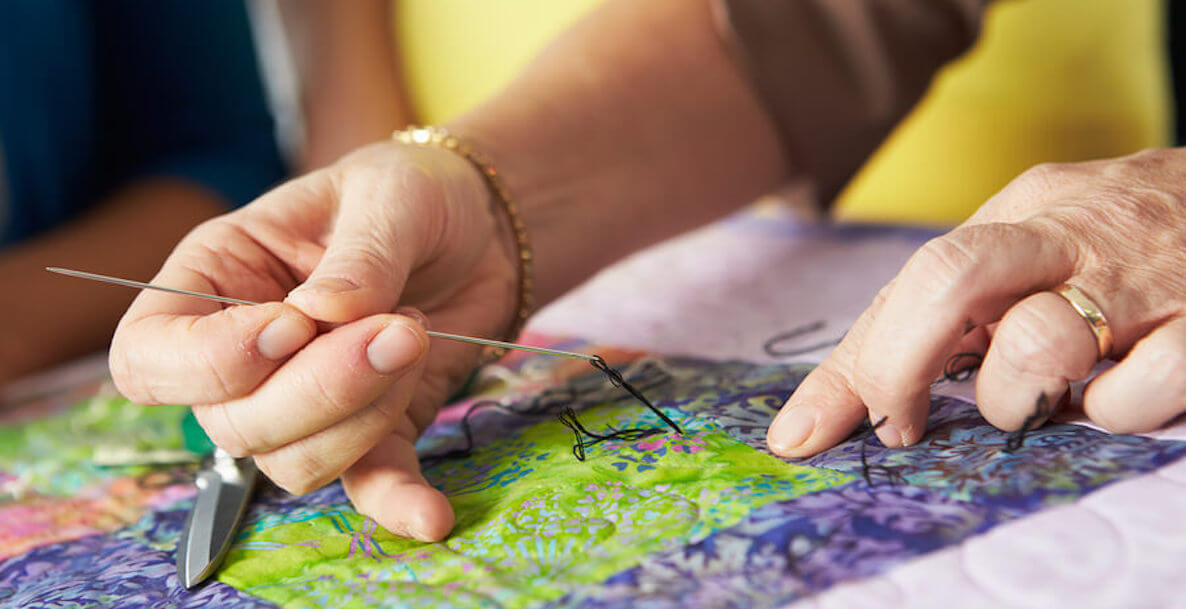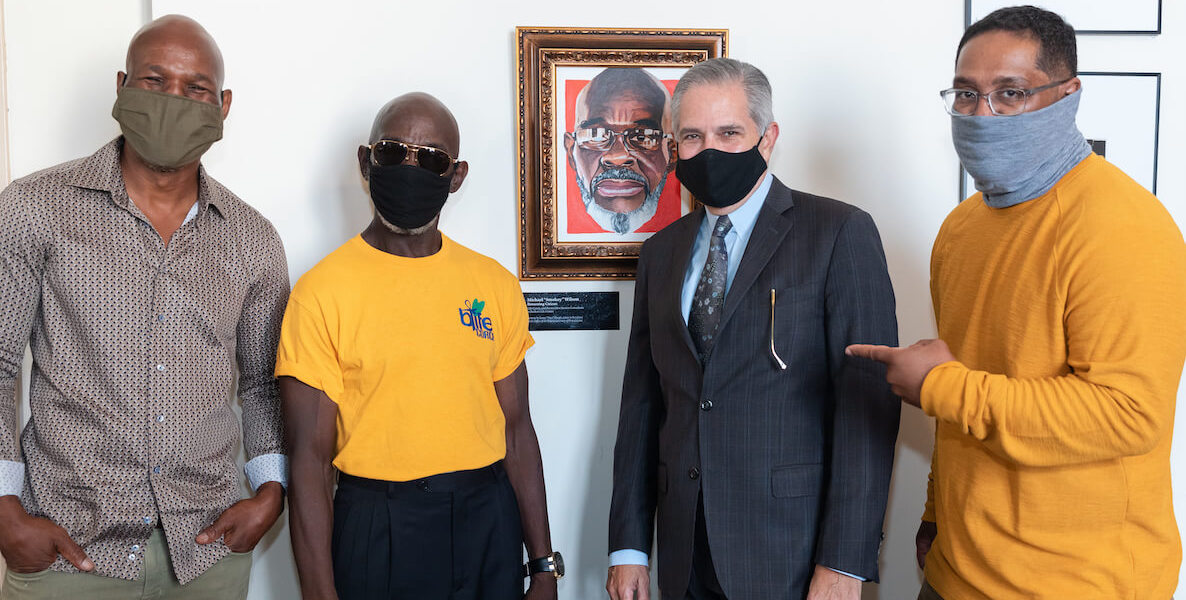If you could wish into being anything from the city, using city money, what would it be? A new park in your neighborhood? Less police and more social services? More police? A brand new school building to replace the asbestos-laden one down the street? Bike lanes?
And what would it look like if your priorities, or your neighbors’, or the residents’ across town, were reflected in the city’s $4.8 billion budget? Like, literally look like?
Stitching Our Futures, a program from Mural Arts Philadelphia, has one unusual answer to that last question: A budget quilt, made up of individualized squares that hold a budget wish from any Philadelphian who joins in.
Artist and community organizer Phoebe Bachman calls the project a “participatory quilting project”—a play on participatory budgeting, in which cities set aside funds for the public to decide how to spend—that “imagines the possibilities of re-allocating resources to fund equitable change.”
Sew a squareDo Something
The first half of each 90-minute session will be a conversation led by community activists about how the city’s funding impacts different issues and residents in the city, and what could be different to make needed changes. “Our work is to amplify ideas and educate people about the budget process, but also the intricate dialogues that have been happening, like where does “Defund the Police” come from?” Bachman says.
“It’s about abundance and imagination,” Bachman says. “What do you want to see funded? What resources do you want to see in your city? We’re not fighting against one another in this, but building something together.”
For the second half, participants will break into small groups of stitching circles, in order to put their visions and desires onto a quilting square, with (virtual) help from Krimes and Bachman.
Afterwards, quilters will send their squares back to Mural Arts (postage will be pre-paid) and Krimes will take them to a quilting group in Lancaster with whom he frequently works to have them stitched together into one tapestry. MAP will display the quilt in or around City Hall when City Council starts its budget process in the spring.
“People want the chance for their advocacy to be heard by the people in power,” Bachman says. “We want to get the message from the quilt to Councilmembers’ ears.”
The project highlights an idea that often gets lost amidst the municipal politics, and hours of City Council budget testimony, and complicated but vague descriptions of how public money is spent in Philadelphia: that budgets are moral documents with priorities that (in theory) reflect the communities they represent. In reality, most of us don’t know where the money goes, few pay much attention to what’s happening in City Hall, and those who do often show up advocating for one issue they care about, without a complete picture of the whole.
Last year made clear that the budget presents a critical opportunity: First, there were the painful budget cuts Mayor Kenney and Council passed, all but eliminating support for the arts, among other things; then there were the massive movements calling to “Defund the Police” and put more money into social services, and the homeless encampments protesting the lack of affordable housing in Philly.
What If We Let Citizens Decide How to Spend City Money?Video
Mural Arts is partnering with the Philly Modern Quilt Guild and California-based Social Justice Sewing Academy, a program that uses art as a means to connect youth to activism, as well as the city’s Budget Office, which itself has launched a participatory budget program this winter. Bachman says that in addition to staff from the Budget Office, City Councilmembers Helen Gym and Isaiah Thomas have promised to be at some of the sessions, and that she has invited all their colleagues as well.
Whether City Councilmembers take note of the quilt when it’s displayed—whether they make choices that reflect what’s in it—remain to be seen, of course. First, though, there’s the work of learning, engaging, thinking and creating the city we want to see.
“Being able to translate what your budget priorities are on to fabric takes a little more meditation, sitting with your thoughts,” Bachman says. “It’s about abundance and imagination. What do you want to see funded? What resources do you want to see in your city? We’re not fighting against one another in this, but building something together.”
Friday February 19, 6-7:30 pm; Thursday February 25, 6-7:30 pm; Thursday March 4, 6-7:30 pm; Thursday March 11, 6-7:30 pm; Friday March 19, 1-2:30 pm. Free and virtual. Register here.






